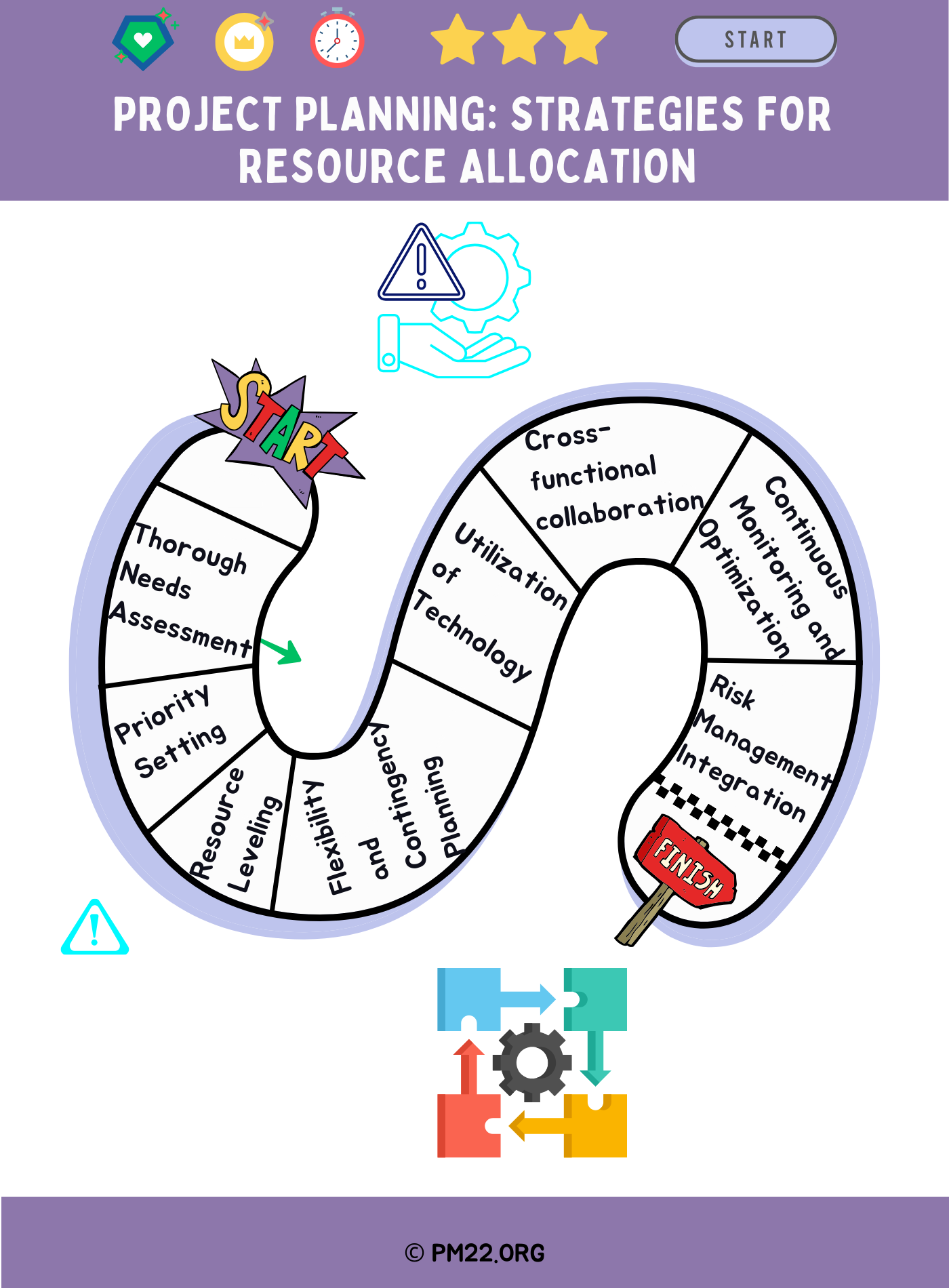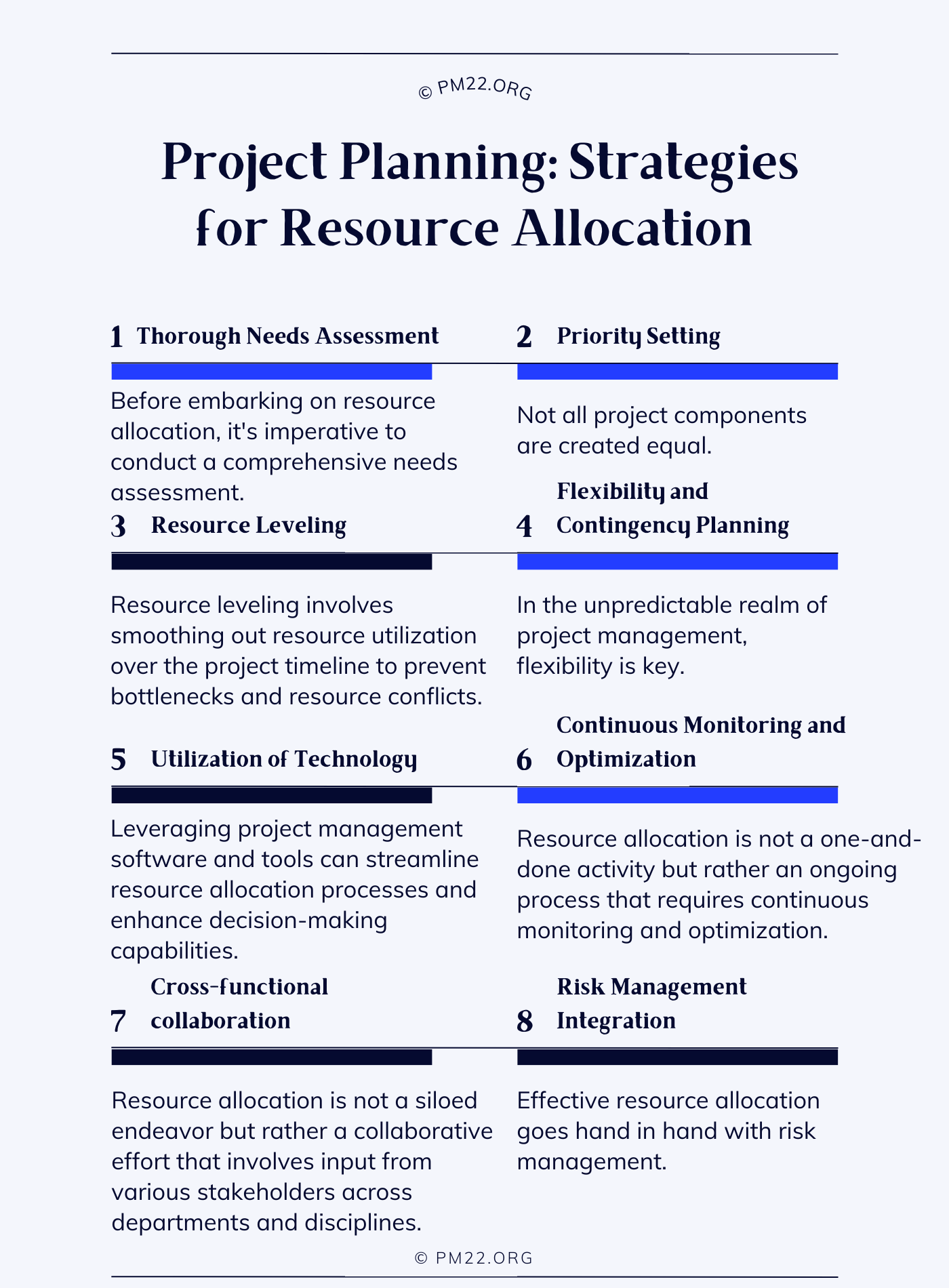 In the dynamic landscape of project management, resource allocation stands as a linchpin for success. Whether it’s human capital, finances, or time, the judicious distribution of resources can significantly impact project outcomes. However, the art of resource allocation is often a challenging endeavor, fraught with complexities and uncertainties. To navigate these challenges and optimize efficiency, project planners must employ effective strategies tailored to their unique contexts. Here, we delve into the realm of project planning and unveil key strategies for proficient resource allocation.
In the dynamic landscape of project management, resource allocation stands as a linchpin for success. Whether it’s human capital, finances, or time, the judicious distribution of resources can significantly impact project outcomes. However, the art of resource allocation is often a challenging endeavor, fraught with complexities and uncertainties. To navigate these challenges and optimize efficiency, project planners must employ effective strategies tailored to their unique contexts. Here, we delve into the realm of project planning and unveil key strategies for proficient resource allocation.
- Thorough Needs Assessment: Before embarking on resource allocation, it’s imperative to conduct a comprehensive needs assessment. This involves identifying project requirements, analyzing potential risks, and anticipating obstacles. By gaining a clear understanding of project demands upfront, planners can allocate resources more strategically, mitigating the likelihood of shortages or overages later in the project lifecycle.
CLICK HERE TO DOWNLOAD 300+ PROJECT MANAGEMENT TEMPLATES & DOCUMENTS IN EXCEL
- Priority Setting: Not all project components are created equal. Prioritizing tasks and deliverables based on their importance and impact allows planners to allocate resources where they matter most. Employing techniques such as the Eisenhower Matrix or critical path analysis can aid in distinguishing between urgent, important, and non-critical activities, thereby guiding resource allocation decisions.

- Resource Leveling: Resource leveling involves smoothing out resource utilization over the project timeline to prevent bottlenecks and resource conflicts. By staggering task assignments and adjusting timelines, planners can ensure a balanced workload for team members and optimize resource utilization throughout the project duration.
- Flexibility and Contingency Planning: In the unpredictable realm of project management, flexibility is key. Allocating resources with built-in contingency plans enables teams to adapt to unforeseen circumstances without derailing project progress. Whether it’s allocating buffer resources or maintaining a reserve fund, having contingencies in place ensures resilience in the face of uncertainty.

- Utilization of Technology: Leveraging project management software and tools can streamline resource allocation processes and enhance decision-making capabilities. From resource management platforms that provide real-time visibility into resource availability to advanced analytics tools that optimize resource utilization, technology empowers planners to make data-driven allocation decisions with precision and agility.
- Cross-functional collaboration: Resource allocation is not a siloed endeavor but rather a collaborative effort that involves input from various stakeholders across departments and disciplines. Engaging in cross-functional collaboration fosters a holistic approach to resource allocation, ensuring alignment with organizational goals and maximizing synergies between different project teams.
CLICK HERE TO DOWNLOAD 300+ PROJECT MANAGEMENT TEMPLATES & DOCUMENTS IN EXCEL
- Continuous Monitoring and Optimization: Resource allocation is not a one-and-done activity but rather an ongoing process that requires continuous monitoring and optimization. By regularly assessing resource utilization, identifying bottlenecks, and making timely adjustments, planners can fine-tune resource allocation strategies to optimize efficiency and minimize waste throughout the project lifecycle.

- Risk Management Integration: Effective resource allocation goes hand in hand with risk management. Integrating risk assessment into resource allocation decisions allows planners to proactively identify and mitigate potential threats to resource availability, ensuring a smoother project execution process and safeguarding against costly disruptions.
In conclusion, proficient resource allocation is the cornerstone of successful project planning. By employing strategic approaches such as thorough needs assessment, priority setting, resource leveling, flexibility, technology utilization, cross-functional collaboration, continuous monitoring, and risk management integration, project planners can optimize resource utilization, mitigate risks, and enhance overall project outcomes. In the ever-evolving landscape of project management, mastering the art of resource allocation is essential for achieving efficiency, resilience, and success.
